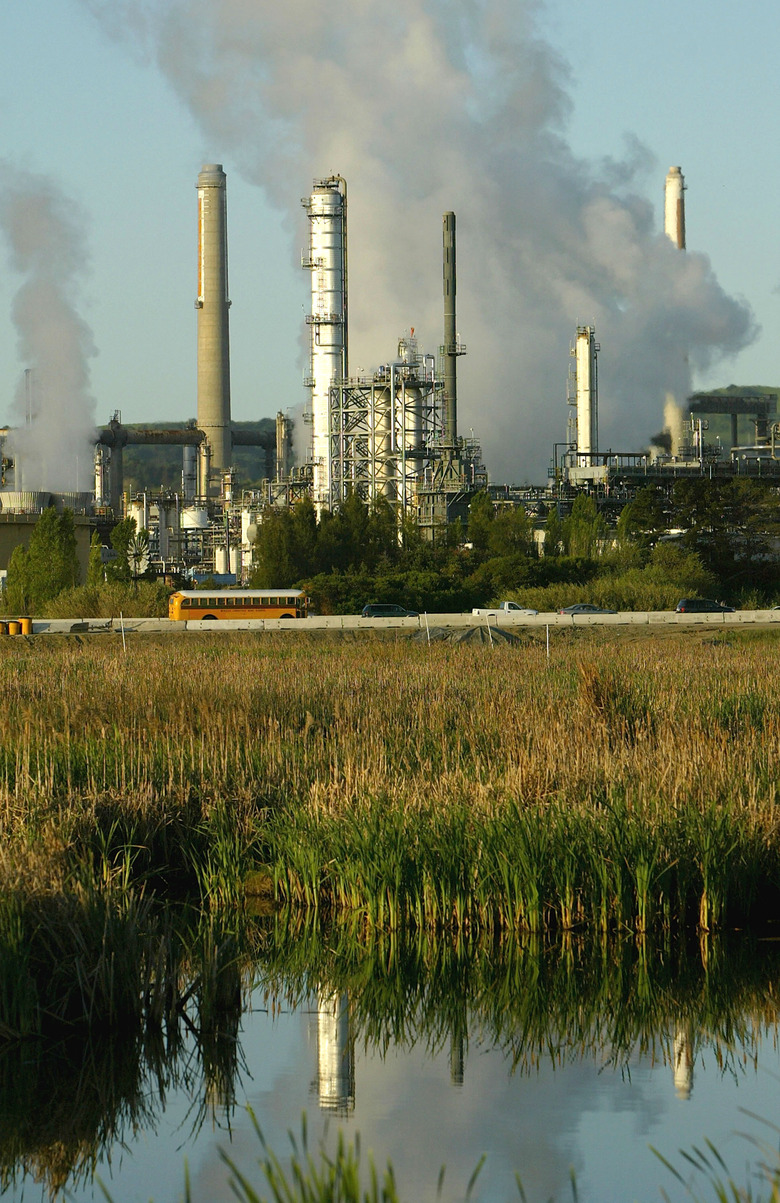How To Identify Pollution
Pollution in air, water and soil may not always be visible, but it can cause harm to humans and animals. Pollutants can come from a variety of human-related and natural sources. Sometimes pollution can be identified by sight and smell, such as seeing smoke rising from a smokestack. But most times pollutants can only be identified with physical tests. Identification of pollutants is the first step in reducing pollution in the environment to ensure cleaner air and water.
Sources of Pollution
Sources of Pollution
Environmental pollution mostly comes from human-related sources such as industrial facilities, vehicles, sewage treatment plants, landfills, stormwater, household wood stoves and lawnmowers. Natural sources include dust, smoke from forest fires and volcanic eruptions. "Point sources" are single emissions such as a smokestack, while "non-point sources" are collective emissions over an area, such as exhaust from cars. Pollutants released into air, water and soil are spread throughout the environment by wind, water flow and percolation into the ground.
Air Pollution
Air Pollution
Air pollution is made up of chemical gases and particulate matter that can spread for miles from their point of origin. Particulate matter is a mixture of chemicals, acid from gases, metals or dust held together by liquid droplets. Scientists measure air pollution directly in terms of mass or concentration per volume using mechanical or optical devices. Models can be used to predict total pollution volume emitted over time or distance from a source, based on sample data, wind direction and speed.
Water and Soil Pollution
Water and Soil Pollution
Pollution enters streams, lakes and wetlands by discharge of wastewater from industrial facilities, stormwater runoff from roads and parking lots, or accidental spills. Sometimes pollutants are visible — you may have seen the rainbow-colored sheen that oil creates on water — but metals and other chemicals may be invisible. Specific pollutants can be identified by using commercial kits that measure concentrations of specific chemicals. Samples of water and soil can be collected and then chemically analyzed at a commercial laboratory.
Pollution in Residences
Pollution in Residences
Indoor air pollution sources include cleaning products, vapors from furniture and carpets, or other sources like mold, asbestos or lead-bearing paint in older homes. Pollutants can enter homes from external sources like underlying soil and groundwater, or nearby industrial sites and roads. Homeowners can use commercially available kits to test for pollutants like mold, dust, asbestos, chemicals and lead in paint. Indoor air samples can be collected by scientists for more complex laboratory chemical analyses.
Non-Point Source Pollution
Non-Point Source Pollution
Non-point sources of pollution are difficult to identify and control, as opposed to point sources, which may be controlled through process adjustment or treatment. Some areas — like King County, Washington and Fairfax County, Virginia — have special programs to reduce overall environmental pollution from non-point sources. These programs sample surface water to identify sources, monitor sources such as septic systems and give homeowners tips on reducing pollution.
Cite This Article
MLA
Kent, Mavis. "How To Identify Pollution" sciencing.com, https://www.sciencing.com/identify-pollution-22930/. 24 April 2017.
APA
Kent, Mavis. (2017, April 24). How To Identify Pollution. sciencing.com. Retrieved from https://www.sciencing.com/identify-pollution-22930/
Chicago
Kent, Mavis. How To Identify Pollution last modified August 30, 2022. https://www.sciencing.com/identify-pollution-22930/
